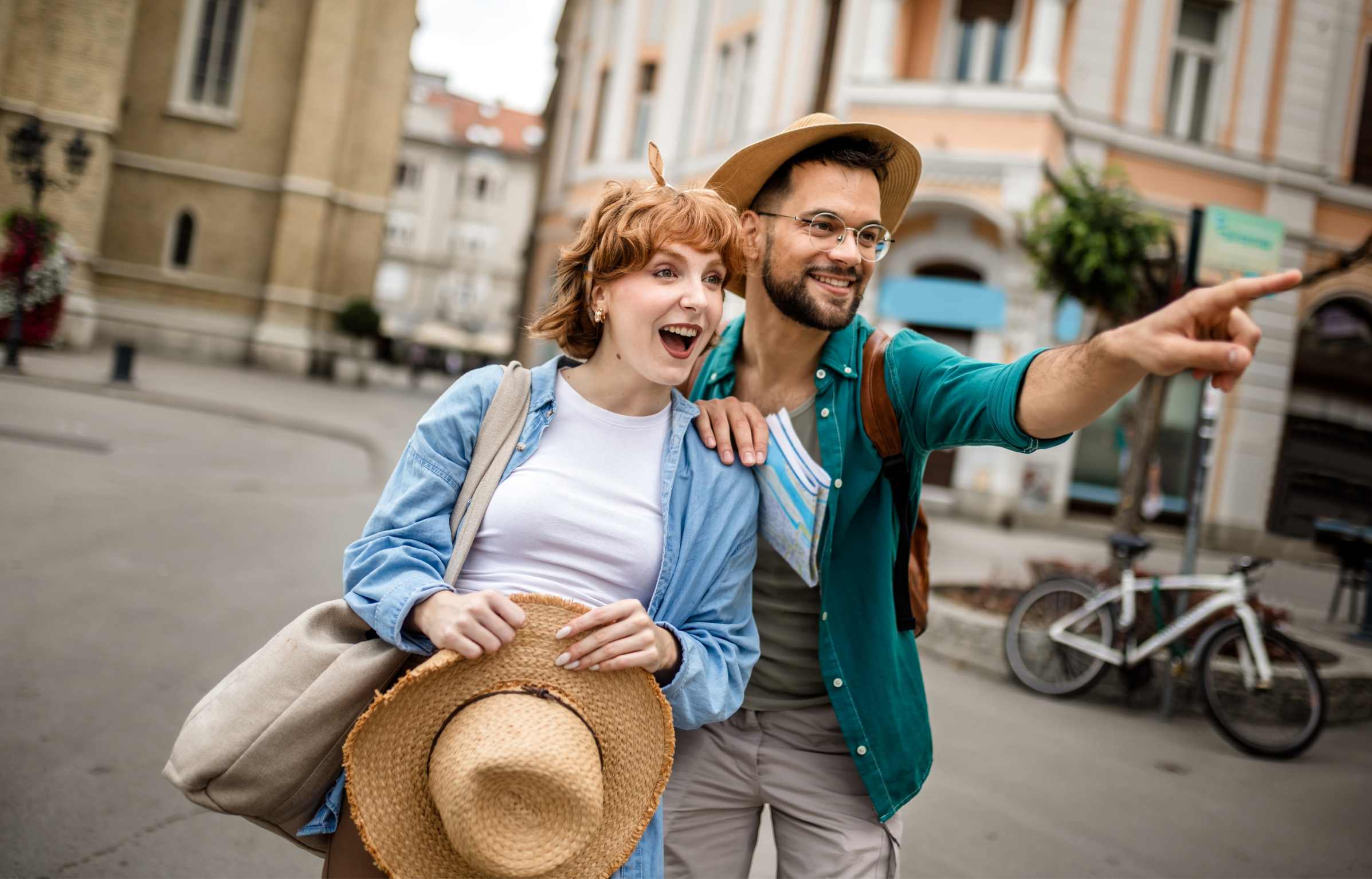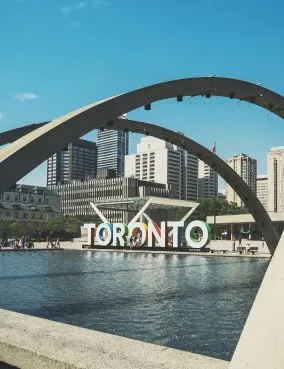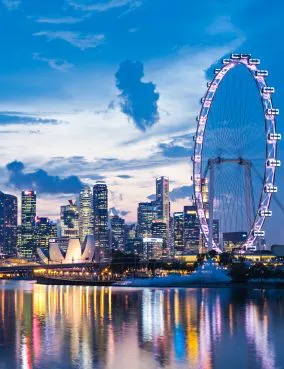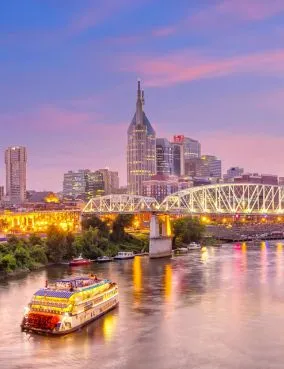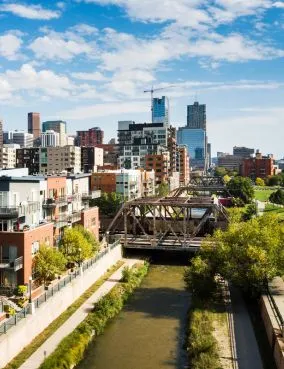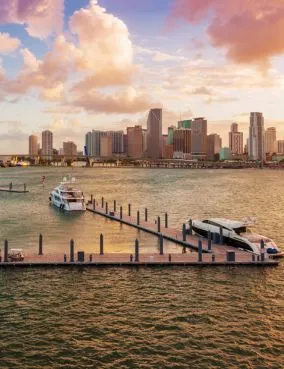Relocating to Singapore is rarely spontaneous. It is a decision shaped by ambition, family priorities, or the desire to trade unpredictability for order. People come with spreadsheets, not travel brochures. By the time they land, they already know the MRT map better than their hometown’s bus routes.
The city offers what many others promise: safety, opportunity, and world-class infrastructure. The difference is, Singapore delivers it without frills or fanfare. The escalators run. The tax office answers. Doctors explain in English. Rules are enforced not with force, but with culture.
But relocation here is not only about precision. Daily life is a quiet blend of rituals—Muslim call to prayer at dawn, roti prata sizzling in corner stalls, school uniforms pressed sharp. English signs guide you, but the rhythm of the city belongs to four major cultures living without conflict. It is rare and disarming.
People come for careers, but stay for control. Order has a strange way of freeing you.
How Do You Get a Visa to Live in Singapore?
Every story about relocating to Singapore starts with the same word: documents. Before you figure out where to buy groceries or how to ride the MRT without looking lost, there is a process, measured, exact, and without shortcuts.
Most professionals arrive with an Employment Pass in hand. This is Singapore’s preferred welcome mat for foreign talent, granted to those who already hold a job offer with a qualifying salary of SGD 5,000 or more and a clean professional history. The system has recently introduced a points-based framework that evaluates applicants on more than just salary: education, diversity, company attributes, and industry fit all come into play. You are not just applying for a job—you are auditioning for a seat in the country’s long-term strategy.
Entrepreneurs face a different path. The EntrePass is technically open to all, but in practice, favours startups aligned with Singapore’s national ambitions—think medtech, AI, or green energy. Retail and hospitality? Less likely.
For families, the city offers a clean environment. Spouses and children often qualify under Dependant’s Passes, while elderly parents or unmarried partners fall into grey zones with steeper income thresholds.
Singapore doesn’t sell a dream. It offers a deal. And that deal starts with a file folder.
What is it like to live in Singapore?
People who move to Singapore rarely do so without a clear intention. There is a certain calculus involved: weather, income, schools, rent, taxes. Some stay for a few years, others for a lifetime. But before any lease is signed or visa stamped, it helps to know what life here actually looks like beyond the headlines and hashtags.
What Works in Your Favour
- The Climate Never Changes and That’s a Good Thing – You can forget about seasonal wardrobes. Singapore’s weather stays firmly in the tropical zone. For anyone done with shovelling snow or checking pollen counts, the city offers a specific relief. The forecast is steady: hot, humid, and manageable. You adapt. Then you start planning weekends around it.
- Housing Has a Range If You Know Where to Look – Newcomers are often surprised by how vertical life can become. Condos come with rooftop pools, gyms, and concierge desks. Public HDB flats are more modest but typically located near parks, schools, and public transportation. Space is expensive, but the architecture is efficient and thoughtful.
- Walking Home at Midnight Is Normal – Safety Here Is Not Just a Statistic. It is a way of life. Children take buses alone. Phones are left unattended at cafés. Most locals cannot remember the last time they felt physically threatened. You begin to unlearn certain habits, and that becomes part of the settling-in process.
- Trains Work and Buses Work and That’s the Point – Singapore’s transit system does not draw attention to itself. It runs quietly and with precision. The MRT is clean, air-conditioned, and rarely late. Even cabs are regulated, metered, and safe. You do not need a car, and most people prefer not to own one.
- There Is Logic in the Layout – From zoning laws to storm drains, the city was built with intent. You notice it in the way greenery wraps around buildings, and in how each neighborhood has a wet market, clinic, or school within walking distance. The city was designed for function, not flair.
- Cleanliness Is Social, Not Cosmetic – No one tells you not to litter. It is understood. While fines exist, they are rarely needed. Cleanliness here is cultural. You start to notice how rare spotless sidewalks are in most other cities, and you begin to expect them everywhere.
What Might Give You Pause
- Private Healthcare Is Fast but Pricey – Public hospitals are reliable and subsidized, but they come with wait times. Private clinics are fast and polished, but also expensive. Most expats purchase international insurance not for luxury, but for protection. A specialist visit can cost more than a short vacation.
- Owning a Car Is a Statement Not a Necessity – Car ownership in Singapore is expensive. Between import duties, road taxes, and the Certificate of Entitlement, the cost of a car often rivals that of a home elsewhere. Driving is possible, but for most, it feels unnecessary. Public transport wins on speed and convenience.
- Vice Taxes Add Up Quickly – If you smoke, drink, or enjoy imported luxuries like cheese and wine, expect high prices. Duties on alcohol and tobacco are among the highest globally. That bottle of wine or a single cocktail at a bar can easily feel like an indulgence.
- The Country Is Small and You Will Notice – It takes under an hour to drive across Singapore. While that size brings efficiency, it also limits spontaneity. Road trips, vast landscapes, or geographic surprises are not part of daily life. Routine sets in fast, especially if you are used to variety.
- Living Well Costs Money – Although income tax is low, rent, groceries, international school fees, and domestic help quickly add up. Singapore is not a budget city. Most residents live with intention. They plan, budget, and spend carefully. The reward is a stable, well-managed life in return.
The Cost of Living in Singapore
Singapore is known for its efficiency, and life here reflects that. Streets are clean, services run on time, and the city moves with quiet order. But living in a place that works this well often comes with higher costs. Rent, food, and everyday expenses can add up quickly, especially for newcomers. Whether moving alone or with a family, understanding the cost of living is one of the most important steps before relocating to Singapore.
What Housing Actually Costs
Space is limited, and that shows up in the rent. A one-bedroom apartment near the city center often starts around SGD 2,800. Move further out, and you might pay closer to SGD 2,000. But a family-sized three-bedroom apartment in a central area can climb to SGD 5,500 or more. Prices dip slightly in quieter neighborhoods, but not dramatically.
What drives cost is less about the number of bedrooms and more about location and amenities. Condominiums with pools and gyms command a premium. Older walk-up flats, though spacious, come without frills. And unless you have a local contact or agent, it is easy to overpay.
Housing here is not casual. It is one of the first and most strategic choices expats make. Getting it right saves money. Getting it wrong turns into a monthly reminder.
Foods and Eateries
Food is relatively cheap in the city, whether you plan to eat out or cook at home, getting the most bang for your buck wherever you go. If you plan to cook at home, monthly food costs can be around 200 SGD, including vegetables and meats. So if you’re looking to stay on a budget, this is the way to go.
Eating out can be a little more expensive in Singapore, as a mid-range restaurant offers a three-course meal for two people for an average of 80 SGD. There are also cheaper alternatives, with meals costing 13 SGD and a regular coffee costing 5.50 SGD on average.
Healthcare
Singapore offers residents universal health coverage, allowing them to get the treatment they need while paying premiums. Each citizen will receive a dedicated coverage amount that will depend on their premiums. If the cost of treatment exceeds their coverage amount, they will be responsible for the extra costs.
Furthermore, daily general checkups can be very affordable, with the average checkup costs 20 to 30 SGD, including medicine. And tests such as X-Rays and blood work can cost between SGD 50 to SGD 80.
Utilities
Utilities in Singapore are also quite affordable, with heating, cooling, electricity, and garbage coming in at 176 SGD per month. Monthly internet costs can be as high as 45 SGD for good quality, high-speed 60Mbps.
Getting Around Singapore
Singapore is not just a bustling metropolis, but it is also one of the greenest countries in the world. They have various government-subsidized environment programs focusing on public transport. Here are a few of the significant ways that people can get around the city:
Bus
The bus is one of two significant, government-subsidized ways to move around the city. It is cheap and can practically take you everywhere around the city, as long as you know which ones to take. Multiple bus routes lead to different city corners, and learning them can be challenging at first.
But when you do learn them, you might even find them more convenient than trains and other forms of transportation. Bus stops are abundant, and each one features a layout of the various bus routes.
Taxi
Of course, if you’re looking to go somewhere in a rush, then a taxi can be your best bet. The city’s taxis can offer a very comfortable ride and are pretty reasonably priced. Meters can start between 5 SGD and 3 SGD depending on peak hours, with an extra charge of 0.22 SGD every kilometer you travel.
Of course, these rides can get a little expensive when taking one out during rush hour, as you can easily find yourself stuck in traffic for minutes at a time. The drivers also usually speak English, so be sure to talk to them if you have any questions about the city.
Car
You can also rent a car or buy one if you’re looking to get around the city at your convenience. Rentals are easy to find, and locally made cars are not too expensive to buy. However, there are secondary and tertiary expenses associated with owning a vehicle, such as annual taxes, parking tickets, and, not to mention, ERP charges.
Furthermore, driving is further disincentivized by the fact that people drive on the left and that gridlocks can be very troublesome to handle. So unless you have to, there are plenty of better options for getting around the city than driving a car.
Subway
Taking the subway is easily the best way to get around Singapore, as it offers the best advantages of all other types of transportation in the city. It is speedy, cheap, and easy to understand. The train connects to all of the best locations in the city, and the stations are never too far away.
The most expensive fare you can pay on the subway is just 2.50 SGD, which makes it the cheapest way to get around the city. However, taking the subway also means you will be walking a lot, so be sure to wear comfortable walking shoes.
On Foot
Singapore is not a very large country, so everything is relatively close. And if you want to go to some of the smaller neighborhoods that don’t connect to the bus or subway routes, you will have to walk through them. These neighborhoods add a lot of character to the city and are worth visiting to take in their unique cultural side.
On a Bike
Getting around the city on a bike is easily one of the best ways to get around since the large pavements make for enough room for cyclers to get around. The town also features dedicated bike racks and a range of connected cycling paths. And if you have a foldable bike, you can also bring it on board buses and subways.
Weather in Singapore
Singapore is a unique country, but if you were to pick one thing that sets it apart, it would be the weather. Singapore features consistently sunny and tropical weather, with the hottest months being June and the coldest ones being January. However, it still never drops below 25°C, which means that you won’t need your winter clothes as much.
Therefore, without distinct seasons throughout the country, other factors to consider include precipitation, humidity, and cloud cover.
Clouds
Singapore doesn’t necessarily have very cloudy weather, thanks to its proximity to the equator. Therefore, the clear months will usually start around January and end in April. After these few months, the city experiences fairly cloudy weather, with November being the foggiest month.
Precipitation
The country’s rainfall further complements the tropical environment of Singapore. Months with the most rainfall start from the end of March and continue until January. The month with the most rain is November. Precipitation can reach 0.04 inches, with an average of 18 days of rain. With just three dry months throughout the year, you will need to prepare for the rain accordingly. Be sure to pack an umbrella or a raincoat when going out.
Humidity
As you would expect in a tropical city, Singapore can become very humid, especially during the hotter months. And since humid months change, the slowest, humid days can feel very difficult to get through at times. So, if there was a particularly sweaty morning, then it will also be a fairly sweaty night, except under a few conditions. Therefore, you will be using the air conditioner or a ceiling fan more often.
Wind
Besides being a fairly wet country, Singapore is also quite windy, with wind speeds varying depending on several factors. Excessive winds can start from the first week of December till the second week of March. Winds during these months can reach an hourly speed of 10.3 miles.
Fortunately, winds tend to calm down for the rest of the year, with wind speeds peaking during April at 5.4 miles per hour. Wind direction can also change depending on a variety of factors, including other months.
What Does the Job Market in Singapore Look Like in 2025?
Singapore’s economy has avoided major disruptions in recent quarters, but the hiring pace has shifted. It is steady, not urgent. The country’s unemployment rate stands at 2.8%, a figure that reflects a system still adjusting to the volatility of the pandemic era but now largely settled.
For those relocating to Singapore, the professional landscape remains open, though not without filters. Banks continue to expand their roles, particularly in regulatory compliance and financial technology. Analysts say hiring is strongest in risk and digital operations. One private recruiter noted that interest in cross-border payment roles has grown since last year, even as crypto hiring has declined.
In the tech sector, demand has remained steady. Software engineers, data specialists, and cloud architects are in high demand across multiple industries. A report by Singapore’s Infocomm Media Development Authority projects that around 20,000 new jobs will appear by late 2026, many of which are tied to the digitalisation of infrastructure and education systems.
Other sectors are moving more quietly. Healthcare employers are adding headcount in elder services, and biotech firms have begun staffing up for clinical research roles. These are not headline jobs, but they are steady.
Singapore has never promised easy entry. Hiring is methodical. Employers expect clarity, credentials, and often regional context. But for professionals with the right background, the city continues to offer a rare mix: a substantial paycheck, low political drama, and a future you can reasonably plan around.
For professionals moving to Singapore from the UK, the market remains accessible, structured, and well-suited for those who plan.

The Crypto Community in Singapore
When China imposed a sweeping ban on cryptocurrency mining in 2021, the global crypto economy was forced into a sudden reroute. For years, China had served as the world’s primary engine for mining activity, offering vast industrial zones and low-cost electricity. The ban displaced dozens of companies almost overnight.
Some moved west. In the United States, Texas became a landing point despite higher energy costs. Its appeal rested on land availability, regulatory openness, and a large pool of engineering talent. Others looked to Central Asia, where countries like Uzbekistan legalized cryptocurrency and offered cheap power as an incentive.
But several firms turned to Singapore. The city’s proximity to China made relocation easier logistically, while its strong financial infrastructure offered reassurance. Although Singapore had already positioned itself as a fintech hub, the arrival of former mining companies brought new pressure—and opportunity.
Hiring has followed. Developers remain in high demand, but the surge in blockchain infrastructure has created openings in legal compliance, cybersecurity, data operations, and token economics. These are not speculative startups. They are companies rebuilding with regulation in mind.
Today, crypto-related hiring in Singapore is smaller than in 2021, but it is steadier. Recruiters report increased demand for professionals with blockchain experience who can work within structured frameworks. For those relocating to Singapore, the digital asset space is no longer a gamble. It is a maturing industry that, while more cautious, continues to grow and to hire.
UI/UX Designers
One of the industries most significantly affected by cryptocurrencies has been UI/UX design. They are essential in the crypto space as they help create new software that both the company and its customers can use. Not only will you need a degree in programming, but you will also need experience in designing well-thought-out user interfaces. They should be simple, easy to understand, and fast, ensuring minimum delay when trying to get work done.
Relationship Managers
Cryptocurrency is not the easiest thing to understand, especially regarding the system it operates on, blockchain. But if you have experience working in client-facing roles, you can be an especially good candidate. Helping clients understand cryptocurrencies, blockchain, and NFTs can go a long way in building better relationships with them. Of course, as a relationship management expert, you will be working with high-profile clients, ensuring them that everything is fine.
Higher Education Opportunities
If you’re someone looking to relocate to Singapore for an opportunity to study and advance your career, Singapore is also home to some of the most impressive educational institutions in the world. Some impressive facts and figures include:
- Institutes of higher education from different countries offer industry-specific courses in their branches here
- You can find various government-funded educational institutes, all of which offer various degree programs.
- Singapore has five polytechnic institutes in the country, which offer specific skills for a job.
Some of the best universities in the country include:
Singapore University of Technology and Design
The university was established in 2009 as a public institute focused on higher education. The university is located in the city’s central hub and offers many degrees that many major companies have recognised. They offer these degrees in various fields of study, such as arts and humanities, medicine, social sciences, and science and technology. Overall, the university is one of the best in the country.
Singapore Management University
The Singapore Management University is a fairly medium-sized public university that offers a bachelor’s degree in various courses. It ranks number 731 on the world’s university rankings, and offers both a bachelor’s and master’s degree in courses for arts and humanities, social sciences, and science and technology.
Places to Visit in Singapore
As a popular tourist destination, there are plenty of things and places to see when you visit Singapore. So if you want to take in the sights and all of the best things about Singapore, here are some of the best attractions you need to visit.
Jewel Changi Airport
The Jewel Changi Airport is the definition of artistic architecture, which is easily one of the most stylized buildings in the city. The 10-story structure features over 300 shops and a garden in each terminal. The terminals also seamlessly connect, with Terminal One featuring a cactus garden, Terminal Two showcasing a sunflower garden, and Terminal Three boasting a butterfly garden.
Apart from the different gardens you can explore, the airport is also home to the HSBC Rain Vortex. The 40-foot-high man-made waterfall is entirely indoors and features 2,000 trees surrounding it, creating an atmosphere that makes the airport feel like a rainforest.
National Gallery Singapore
The National Gallery in Singapore is one of the largest collections of modern art in Southeast Asia. All of the art installations are from Asian and local artists, with some pieces dating back to the 19th century. It spans more than 64,000 square meters and consists of two buildings containing over 9000 articles of incredible work.
Apart from the multitude of permanent painting installations throughout the building, there are also temporary exhibits that come and go. You can check their website to learn more about the many installations.
Fort Siloso
Fort Siloso is a military museum and the only preserved fort in the country. Located at Sentosa Island, one of the best ways of reaching that specific fort is the Fort Siloso Skywalk trail. It is an 11-foot-high hiking trail that you can access through a dedicated glass elevator, offering sweeping views of the nearby islands.
Once you reach the fort, you can take a guided tour of the area. The tour guide will provide a description of the weapons or scenes you see, along with a brief history lesson surrounding them.
Maritime Experiential Museum
Singapore boasts numerous incredible museums that delve into the fascinating aspects of the country’s heritage. One of its most interesting exhibits is the Maritime Experiential Museum, which explores the history of various fish species in the country. The museum has ships anchored at the entrance and features multiple fun and interactive exhibits.
The museum also features various replicas of ships that once sailed, such as the Jewel of Muscat. It is a replica of the same vessel that sank on its way to China from Africa. Your guides can also teach people navigation skills.
Fort Canning Park
Fort Canning Park is a spacious open area with the historic Fort Canning situated within it. It is one of the most historically significant structures in the country, as its primary purpose was to protect the nation against attackers. However, by the time the Second World War began, it had become a bunker. And by 1942, Singapore had surrendered the fort to the Japanese forces.
You can go inside the fort and look around the many art installations in the building, along with a theatre. You can catch various live performances at the theater or step outside and look at some of the exhibits that date back to the 14th century.
Pulau Ubin
Singapore is home to many small islands, 64 to be exact. These small islands collectively form the landmass of Singapore, which spans 275 square kilometres. And one of the islands in Singapore that maintains its heritage is the Pulau Ubin, where the population doesn’t go past 100 people. These people continued to live life before Singapore became a country, acting as real-life monuments to a lifelong past.
Tourists can even enjoy untouched rainforests and unique wildlife species that remain safe from the country’s rampant industrialisation.
Asian Civilization Museum
Empress Palace Building, also known as the Asian Civilization Museum, is another colonial-era building made in honor of Queen Victoria. The installation finished construction by 1865, and the government made an effort to preserve its neoclassical design. The museum itself respects the many cultures that make Singapore the country it is today.
It focuses on trade and spirituality, which heavily influenced Asian cultures.
What Can You Do on Weekends After Relocating to Singapore?
Weekends in Singapore are not about escape. They are about discovery. For many relocating to Singapore, what starts as a work-related move becomes a surprising invitation to explore—a side of the city rarely seen in guidebooks but deeply felt by residents.
Green Spaces in a Vertical City
Singapore may be compact, but it breathes through its parks. The Singapore Botanic Gardens, a UNESCO World Heritage site, offers early morning peace before the city wakes. Further afield, MacRitchie Reservoir is where joggers and wildlife watchers share trails. The Southern Ridges link several hilltop parks, complete with canopy walks and skyline views.
For families, East Coast Park provides seaside cycling paths, barbecue pits, and kayak rentals, all set against the slow movement of cargo ships on the water.
Island Escapes Without Leaving the Country
Just a 15-minute ferry ride away, Pulau Ubin feels like a different world. No skyscrapers, no schedules—just gravel paths, bike rentals, and villagers living in kampongs (traditional homes). It is one of the last places in Singapore where the past isn’t just remembered but lived.
On the other end of the spectrum is Sentosa Island, home to beaches, luxury resorts, and attractions like Universal Studios, S.E.A. Aquarium, and the Skyline Luge.
Culture, Food, and Late Nights
On weekends, Singaporeans eat. Maxwell Food Centre, Chomp Chomp, and Old Airport Road serve up Michelin-worthy meals for under SGD 10. Dishes like satay, laksa, and chicken rice are weekend rituals.
Art lovers stroll through Gillman Barracks or visit rotating exhibitions at the National Gallery. Live music is found at Esplanade’s outdoor amphitheatre, while late-night cinema screenings at The Projector draw a creative crowd.
Shopping and Street Life
Orchard Road is the obvious retail destination, but neighbourhoods like Haji Lane, Tiong Bahru, and Joo Chiat offer a different kind of weekend browsing experience, featuring independent bookstores, local designers, vinyl records, and secondhand curiosities.
In Little India and Chinatown, weekends are louder and more vibrant. Markets overflow. Incense mixes with spices. The city slows down, but it never really stops.
Relocating to Singapore opens the door to unexpected cultural richness—in bustling food courts beneath gleaming skyscrapers, along serene nature trails winding through neighborhoods, within vibrant art galleries, and even in the quiet moments waiting for a ferry. Though the island is small, its weekends unfold with remarkable breadth and depth.
The Path Forward: Settling into Singapore
Relocating to Singapore presents a unique opportunity to experience a city where efficiency and culture blend seamlessly. The city’s well-ordered systems and rich diversity create a lifestyle many seek—a balance of stability and vibrancy. While the process of moving can feel complex, understanding the visa requirements, housing options, and job market prepares you for success. For those who are ready to make Singapore their home, the journey is both rewarding and transformative. With careful planning and support, you can navigate the challenges and settle into a city that offers both opportunities and a high quality of life.
Step into your Singapore story with confidence.
Relocating to Singapore is a journey best taken with expert guidance by your side. At Relo, we transform the complexity of moving into a seamless experience, handling everything from visas and housing to every detail in between. Imagine arriving ready to thrive, not just survive. Your new chapter awaits in a city that rewards precision and celebrates diversity.
Don’t just move—arrive empowered. Connect with Relo today and discover how effortless relocation can be when you have the right partner.
Dreaming of a vibrant new life in Singapore? Relo.AI makes relocating to Singapore truly effortless. We’re the trusted experts who transform complex international moves into seamless realities for discerning individuals and families.
Contact Relo today and confidently step into your vibrant new life in Singapore!


